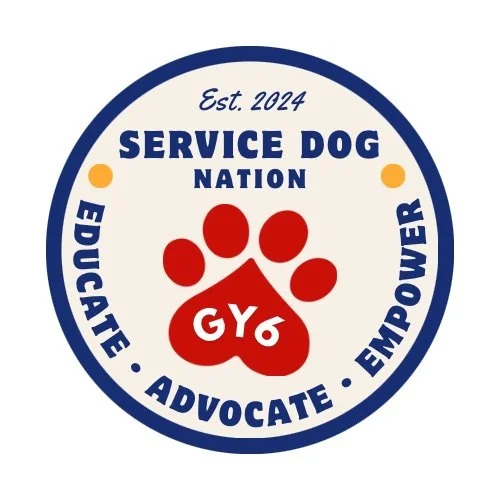So You Say You Want A Service Dog • Part 2
Your Training Options:
Program-Trained Dogs
• These dogs come pre-trained and ready to work, but they’re expensive ($15k–$50k) and often have long waitlists (1–3 years).
• The benefit? You know the dog is professionally trained and evaluated for service work.
Owner Training
is route requires dedication and, ideally, some prior dog-handling experience. Start with the basics: sit, stay, leave it, and recall.
Once the basics are solid, move on to task training specific to your disability.
Group classes can help with socialization and working around distractions.
Combination Training
Many handlers train with a mix of personal effort and professional help. Trainers can guide you through tricky tasks or refine the dog’s skills.
Rescue Dogs
Rescue dogs can make amazing service dogs, but not every dog is cut out for the job.
When adopting, follow the 3/3/3 Rule:
3 Days: Your dog adjusts to being in a new home.
3 Weeks: They start settling into routines.
3 Months: They bond and feel fully comfortable.
A Trainer’s Perspectiv • What I Learned From A Trainer:
*I am not a dog trainer
Any breed can make a service dog but not every dog is cut out to be a service dog. It’s not just about intelligence—it’s about temperament, confidence, and adaptability. Some dogs don’t handle stress or distractions well, and that’s okay. If your dog isn’t suited for service work, don’t force it.
Patience is everything. Training doesn’t happen overnight. Break it down into small steps, and celebrate progress, even if it’s just a great “sit” in a busy environment.
Socialization is also huge. Your dog will encounter everything from kids screaming at the park to noisy grocery store carts. Expose them to the world safely and gradually. I took Finn and Rain to a training class that was held by a local trainer. It was a safe way to train with distractions
A Handler’s Perspective
As a handler, I can tell you firsthand that a service dog is life-changing—but it’s also a lot of work. My dog didn’t just arrive perfect; we trained, bonded, and learned together.
There will be days when training feels impossible. Maybe your dog is distracted, or maybe you’re having a rough day. It’s okay to step back, take a breath, and try again tomorrow.
The bond you build with your dog will make the hard days worth it. They’re not just working for you—they’re working with you. That partnership is something special.
What to Keep in Mind
1. Find the Right Dog: Whether you adopt, buy from a breeder, or work with a program, pick a dog that fits your lifestyle and needs. Consider size, energy level, and grooming requirements.
2. Take Your Time: There’s no shortcut to proper training. It’s better to take it slow and do it right than rush and risk burnout for you or the dog.
3. Ask for Help: Trainers, handlers, and support groups are out there. You don’t have to do this alone.
4. Bond First, Train Second: A strong connection with your dog is the foundation of everything. Spend time playing, cuddling, and getting to know each other.
The Bottom Line
Getting a service dog isn’t just about having a dog; it’s about building a partnership. Whether you’re training on your own or working with a program, remember that this is a journey—and the destination is worth it.
Trust the process, lean on your support system, and don’t underestimate the power of your bond with your dog. Together, you’re unstoppable.
